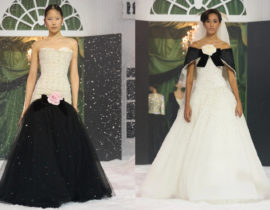
I recently sat down with Carl Jouffroy, a digital marketing pro who helps ecommerce brands boost sales and step up their game. He’s originally from France, but is based in the US. He has nuggets of wisdom for every DTC brand to think about and consider, so don’t be surprised if you bookmark this interview to think more about later. Reach out to him on his website: acethemarket.com.
Jouffroy has over 12 years of experience in digital marketing, and has helped over a thousand businesses across a wide variety of industries achieving asymmetrical online growth. For a decade, he has partnered with C-level executives, crafting strategies to reach their marketing and business objectives. He has consistently exceeded his clients revenue targets whether in eCommerce, Luxury, Telco, Gaming, or Lead Generation.
Here’s his thoughts on luxury fashion.

Which fashion brand does digital ads correctly, in your expertise?
There are many really good brands doing digital ads well, but some of the most advanced are Cartier, Tiffany, Montblanc, LVMH and L’Oréal. You also have Gucci, Hugo Boss and so many more. They benefit from their rich history and strong brand appeal. Additionally, they excel at creating powerful online and offline marketing campaigns.
For instance, an earlier study by Gartner and L2 singled out Cartier as a particularly strong brand due to its engaging online presence and seamless online-to-offline experience. This seamlessness is crucial for luxury brands. Their image needs to be consistent across all channels, from online presentations to the in-store experience.
Cartier, Montblanc, and LVMH, Tiffany and L’Oréal all excel in this area. In their online ads, you can get a firsthand look at the products, learn about their stories and craftsmanship, and gain knowledge that allows you to have a more informed conversation with in-store personnel. This elevates the entire customer experience, which is paramount for any retailer, especially high-jewelry merchants. These brands have made significant strides in the past five years, fully embracing an online-to-offline strategy that transcends the limitations of traditional retail.

How can luxury brands sell on ecommerce without cheapening themselves?
This is a very interesting question, one that many high-jewelry brands are grappling with. It’s about how to present their products and provide a full online experience while maintaining the value they represent to their audience.
Price transparency is a key concern. Traditionally, price is revealed at the end of the sales process. Online, however, transparency becomes an experiment. Interestingly, trends from China and Asia show users are increasingly comfortable buying even expensive pieces directly from online shops.
For luxury brands, the in-store experience remains valuable. Even if customers purchase online, brands can still offer the option of a complete experience, including a visit to the store. As numerous studies illustrate, customer experience and the way businesses answer user questions will be the game-changer in the coming years.
Let me reiterate: Customer experience will be the defining factor between a brand that cheapens itself and one that demonstrates its value. Most users considering high-priced products online are aware of the cost and unafraid to buy. Their concerns lie elsewhere: receiving a fake item, the wrong size, or being unable to make returns or have a complete buying experience that ensures they get the right product.
As a high-luxury brand, providing all this information readily at your audience’s fingertips showcases two things. First, you’re a heritage brand with a rich tradition behind every piece. Second, you’re also a modern brand that can cater to their needs, even through a phone screen.

What do you see happening with fashion digital marketing in the future?
Fashion digital marketing is poised to be one of the most innovative spaces within the e-commerce industry, focusing on creating a seamless online-to-offline experience. Brands, both luxury and non-luxury, have no choice but to offer the best possible experience across all channels where they present their products.
The key differentiator won’t be price, but experience. The smoother and more engaging the experience, the better a brand will perform online. While we’ve discussed luxury brands, it’s important to remember that not all fashion brands fall into that category.
Online success hinges on customer connection, not brand tier. Here are the key questions brands need to consider:
• How do you relate to your customers?
• What kind of experience are you providing them?
• Do you have a unique story to tell?
• Are you offering something your competitors aren’t?
• Can your audience virtually “wear” or try on your products?
The brands that can answer these questions and navigate the challenges to create the ideal customer experience in the next 5-10 years will be the ones that win.
Contact Carl Jouffroy on acethemarket.com.
Photos by Gleb.


